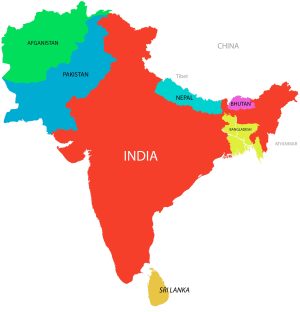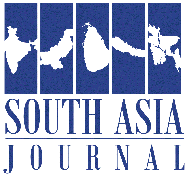
The China-India tussle for influence in South Asia can be expected to intensify should Pakistan and China’s plans for setting up a new regional organization materialize.
According to a report in the Pakistani English daily, Express Tribune, the proposed regional grouping “could potentially replace the now-defunct South Asian Association for Regional Cooperation (SAARC).” According to “diplomatic sources familiar with the development,” the discussions between Pakistan and China are reportedly “at an advanced stage.”
South Asia is among the least integrated regions in the world; intra-regional trade accounts for barely 5-7 percent of its total international trade. South Asian countries struggle with common problems like poverty, climate change and human trafficking that could be better tackled through cooperation.
In 1985, seven South Asian countries — Bangladesh, Bhutan, India, the Maldives, Nepal, Pakistan, and Sri Lanka — came together to found SAARC; Afghanistan joined as the eighth member in 2007. Among its objectives were economic and regional integration to enhance the quality of life of its people.
However, SAARC’s performance over the past four decades has been below par. Decisions are made by consensus, and the India-Pakistan rivalry paralyzed its functioning.
Pakistan would “indirectly target” India at summits, and “try to get the other members to gang up against Delhi,” a retired Sri Lankan foreign secretary told The Diplomat in 2019. As for India, “it refused to move beyond its concerns over terrorism linked to Pakistan, which was a bilateral issue.”
Caught in the crossfire, SAARC stagnated.
Then in 2016, India drove the final nail in SAARC’s coffin when it boycotted the summit that Islamabad was to host. India’s boycott came in response to a terror attack on an Indian army camp in Kashmir in September 2016, which New Delhi blamed on Pakistan-based militants. Afghanistan, Bangladesh, Bhutan, the Maldives, and Sri Lanka followed suit and withdrew from the summit. It was cancelled, and no SAARC summits have been held since.
SAARC’s smaller members have tried to revive the organization by pressing for SAARC summits and meetings on the sidelines of the United Nations General Assembly. But they have met with little success. India has blocked such efforts as it is determined to isolate Pakistan.
“The need for regional cooperation has never been greater, and it is in this context that the Pakistan-China initiative must be seen,” a retired Pakistani diplomatic official told The Diplomat from London. The new organization will seek “greater regional cooperation through greater trade and connectivity among its members,” he said. All SAARC members, including India, will be invited, but “it is unlikely that India or Bhutan will join,” he said.
The China-Pakistan plan for an alternative organization doesn’t come as a surprise. In recent months, the two countries have reached out to third countries to expand regional cooperation. In May, the foreign ministers of China, Pakistan, and Afghanistan met in Beijing, where they agreed to expand the China-Pakistan Economic Corridor to Afghanistan. The Chinese, Pakistani, and Bangladeshi foreign secretaries met at Kunming in China the following month where they committed to enhancing cooperation in areas including economic development and climate change. The Express Tribune report described the Kunming meeting as “part of those diplomatic maneuvers” toward setting up the replacement for SAARC.
Analysts in New Delhi are not surprised by China and Pakistan’s proposed initiative for South Asian regional cooperation.
“China has been undercutting SAARC since the proposal to induct China into the regional grouping was rejected in 2005,” Smruti S. Pattanaik, a research fellow at the New Delhi-based Manohar Parrikar Institute for Defence Studies and Analyses, said.
Pattanaik drew attention to several regional cooperation mechanisms that China has initiated over the past two decades in South Asia. “In 2006, China set up the China-South Asia Cooperation Forum. In 2018, China formed the Belt and Road Initiative (BRI) Trans-Himalayan Connectivity network that includes Pakistan, Afghanistan, and Nepal. In 2021, Beijing floated the China-South Asian Countries Poverty Alleviation and Cooperative Development Center,” she said.
Most importantly, all the South Asian countries, except for India and Bhutan, are members of the Belt and Road Initiative. Consequently, “the latest proposal for South Asian regional cooperation is not new,” Pattanaik said.
Over the years, with SAARC stagnating and failing to deliver the benefits of regional cooperation, New Delhi lost interest in the group and set out on subregional cooperation with its neighbors through such forums such as the Bangladesh, Bhutan, India, Nepal (BBIN) Initiative, BIMSTEC (Bay of Bengal Initiative for Multi-Sectoral and Economic Cooperation), and the Colombo Security Conclave, which includes India, Sri Lanka and the Maldives.
Unsurprisingly, Pakistan is not a part of any of these India-led groupings.
With India unlikely to sign on to the new China-led grouping, what are its prospects?
A look at a map of South Asia would provide pointers. Not only is the region India-centric but also with the exception of Pakistan and Afghanistan, South Asia’s smaller countries do not share land borders with each other. It is only with India that they all share borders.
China has the funds and the expertise in building infrastructure. It already has strong relations with all South Asian countries — with the exception of Bhutan — which will come in handy as it sets out to build regional cooperation.
However, will it be able to overcome the obstacles imposed by geography? Will it be able to build overland connectivity without India on board?
The article appeared in the thediplomat
